
views
X
Research source
Recognizing Thrush Symptoms
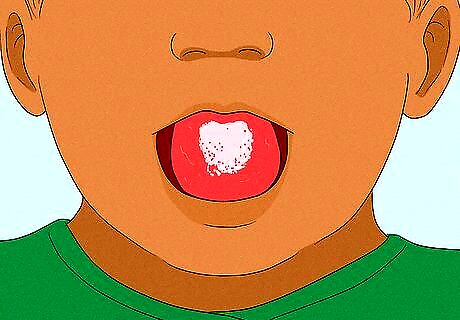
Look for creamy white spots in your baby's mouth. Babies are at high risk for developing oral thrush, which they can spread to their mother's nipples when they breastfeed. White spots or lesions in your baby's mouth are the primary visual indication of oral thrush. Check for these spots on your baby's gums, cheeks, and tongue. Gently scraping the spots may reveal reddish tissue underneath and the spots may be surrounded by reddened or inflamed tissue.Tip: It is possible for your baby to have an overgrowth of yeast without showing any visible symptoms. Pay attention to your baby's behavior as well, such as abnormal fussiness or refusal to nurse.

Pay attention to nipple pain after feedings. Nipple pain caused by other issues, such as the incorrect positioning of your baby, typically only occurs while your baby is nursing. If the pain continues or gets worse after feedings, it may be a symptom of thrush. The stinging, burning pain may be right on the surface of the nipple, or you may feel it deeper in your breast. Typically, your nipples are also extremely sensitive to the touch. It may be uncomfortable to have clothes rubbing against them or to take a shower. They may also be itchy, which can indicate a yeast infection.
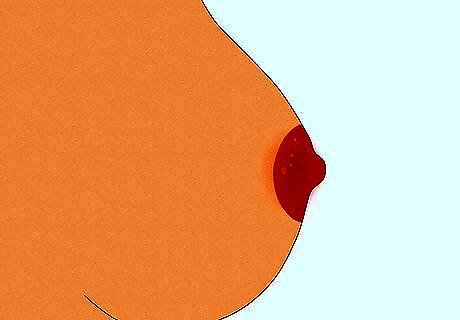
Examine your nipples for blisters or discoloration. If your nipples have thrush, you may notice tiny blisters on them. The nipple may be a deep pink or look inflamed. You may also notice that your nipples are puffy, scaly, or flaky. Your nipples will typically look better than they feel and you may have no visible symptoms at all. You should still seek treatment even if you don't have any visible symptoms of thrush, particularly if breastfeeding is painful.
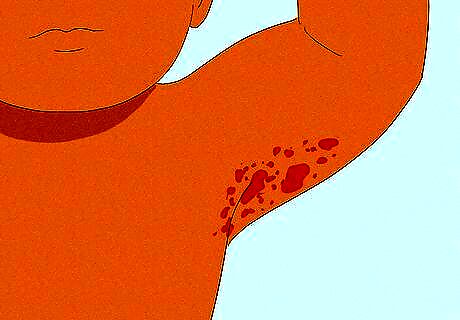
Evaluate whether you or your baby have rashes elsewhere. An overgrowth of yeast can cause rashes or infections in other parts of your body or your baby's body. You may notice rashes in moist areas, such as your underarms or groin. Mothers may also have a vaginal yeast infection, while babies can get a fungal diaper rash. If your baby has a diaper rash caused by the overgrowth of yeast, traditional diaper rash treatments will make the rash worse.
Using Grapefruit Seed Extract (GSE)

Dilute GSE in 1 fl oz (30 mL) water. If you want to use grapefruit seed extract directly on your nipples to ease the symptoms of thrush and help clear the infection, put anywhere from 5 to 15 drops of GSE in 1 fl oz (30 mL) water to dilute it. Applying undiluted grapefruit seed extract directly to your nipples could cause discomfort and make any rash worse. Distilled water is preferable to tap water. Make sure you shake or stir your solution very well to thoroughly mix it.
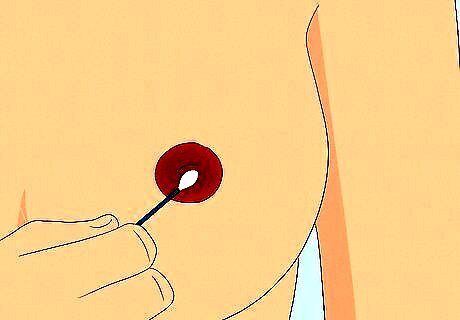
Apply the GSE solution directly to your nipples after feeding. Use a cotton swab or Q-tip dipped in your grapefruit seed extract solution to lightly dab both nipples and areolas. You can also put it in a spray bottle and spray it directly onto your nipples. Keep any leftover solution covered and use it until it's gone. It doesn't have to be refrigerated. Let the solution air-dry on your skin. This will typically take a few seconds.
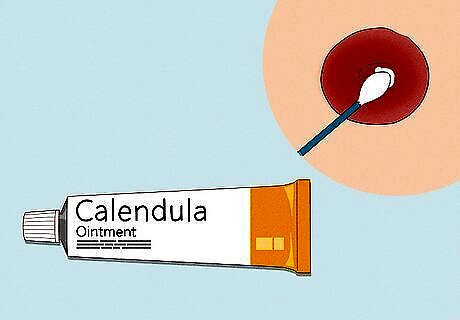
Follow up with all-purpose nipple ointment. After the solution is completely dry, cover your nipples and areolas with a thin layer of all-purpose nipple ointment. Repeat this treatment after every feeding until the pain is gone. Look for an ointment with other soothing and healing herbs and vitamins, such as calendula, comfrey, and vitamin E, to help ease your symptoms. Once your pain is gone, slowly wean off the GSE over a period of about a week. For example, you could use it with every other feeding for 2 or 3 days, then drop to twice a day, then once a day. However, make sure all your symptoms have been gone for several days before you stop using the GSE, or the infection could come back.
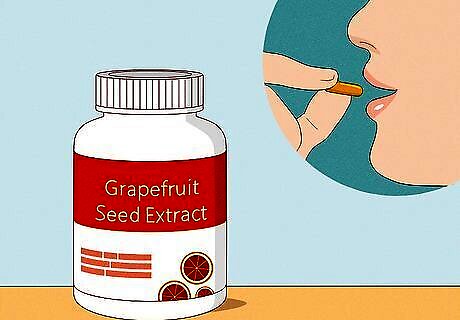
Combine topical application with oral GSE. If you apply GSE directly to your nipples, you should also take grapefruit seed extract orally. GSE is available in tablet or capsule form. You can also consume the liquid extract orally, although it's best to dilute it first. If you take a capsule or tablet, take 250 mg 3 times a day until you are no longer experiencing any symptoms, then gradually cut down over the course of a week. If you take the liquid extract, mix 10 drops in a glass of water or juice. Because GSE can deplete the "good" bacteria in your body, take a probiotic supplement along with GSE.Tip: Talk to your doctor before you start a GSE regimen, particularly if you're already taking other medications or supplements for other conditions. The grapefruit seed extract may interact with other substances you're taking and lead to uncomfortable or harmful side effects.
Combining GSE with Other Treatments
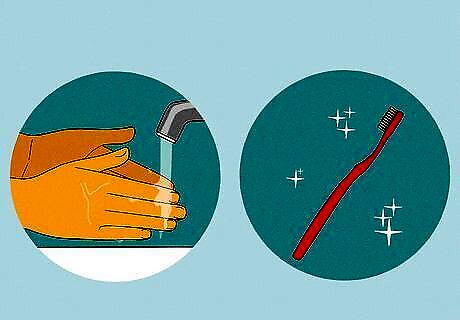
Practice good physical and oral hygiene. Wash your hands often with hot soapy water and dry them thoroughly with paper towels. Throw out any toothbrush you might have used and get a new one – the old one may be infected. Brush your teeth and rinse at least twice a day. Keep your skin clean and dry, especially areas prone to moisture, such as your underarms and your groin. In particular, make sure you wash your hands after diaper changing or using the toilet. You should also wash your baby's hands frequently. Wipe your nipples clean after nursing and let them air dry completely before you cover them up again to prevent future infections.
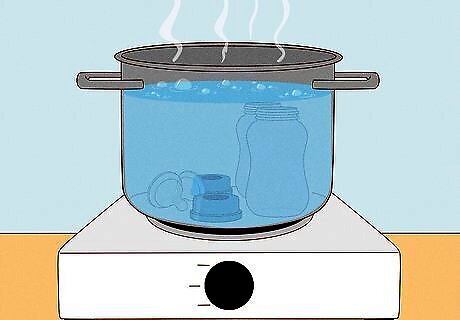
Sterilize or replace any items that could carry thrush. Pump equipment, bottles, and other feeding supplies can carry thrush, as well as anything that came in contact with infected areas. This includes clothing and any toys or objects your baby puts in their mouth. Use white vinegar to sterilize items and wash them at a high temperature of at least 50 °C (122 °F). Add 0.5 to 1 c (120 to 240 mL) distilled white vinegar to the rinse cycle to sterilize all clothing that came in contact with infected parts of your body or your baby's body, especially your nursing bras. You can also treat your laundry with GSE. Add 15 to 20 drops in the rinse cycle.
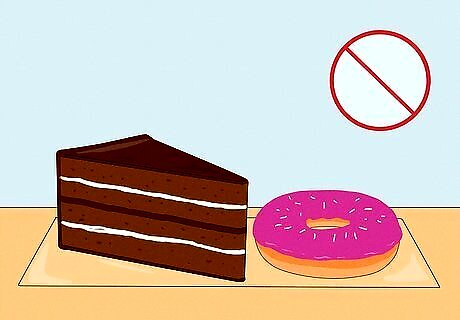
Limit sugar and refined carbs in your diet. Avoid sweets, cakes and pastries, cookies, and soda. Check the sugar content in processed foods as well. Refined carbs, such as white bread and pasta, can also increase yeast growth. These foods can be hard to avoid because the overgrowth of yeast may cause you to crave the very foods you should be limiting. Eating yogurt and other probiotic foods, such as kefir, tempeh, sauerkraut, or kimchi, can help control the yeast and shorten the lifespan of the infection. You might also try drinking green tea, which can clean excess yeast from your system.
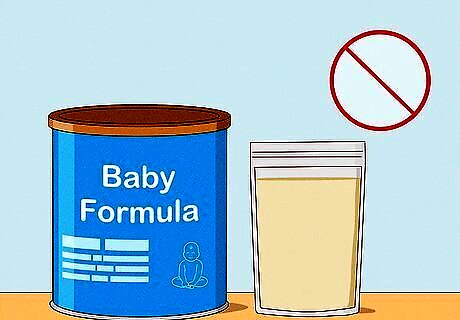
Avoid giving your baby formula or stored expressed breastmilk. While both you and your baby are being treated for thrush, you can feed your baby expressed breastmilk. However, you should immediately discard any unused portion. Your baby could be reinfected with thrush from stored breastmilk. Switching your baby to formula is a bad idea because formula puts your baby at higher risk for developing thrush. If your baby is just getting over an infection, formula may cause reinfection.Tip: Although it may be painful or difficult, it is best to continue breastfeeding throughout the treatment process. You can numb your nipple with an ice cube to ease the pain of nursing.
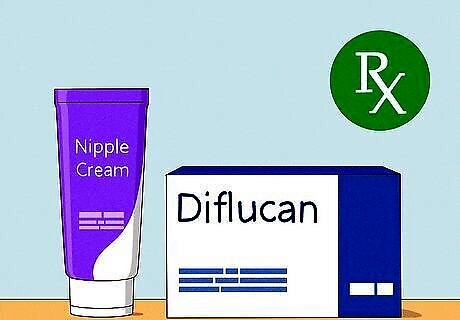
Take any medications prescribed by your doctor. Keep in close contact with your doctor and your baby's pediatrician while you're treating the thrush. You and your baby should be treated at the same time to make sure you don't keep passing the infection back and forth. Your doctor may initially prescribe a topical medication to relieve some of the symptoms of thrush. If topical medications and complementary treatments don't get rid of the thrush, your doctor may prescribe Diflucan (fluconazole). A pediatric suspension is also available for your baby.
















Comments
0 comment